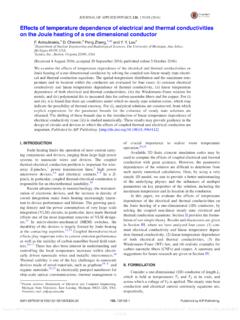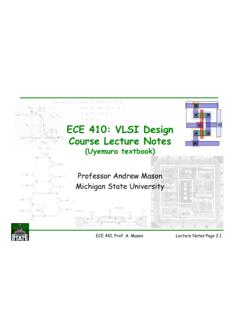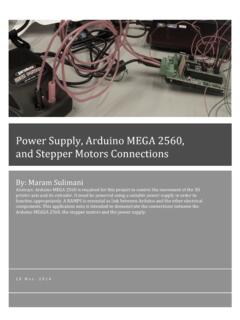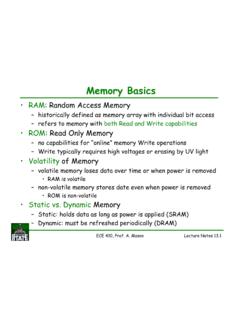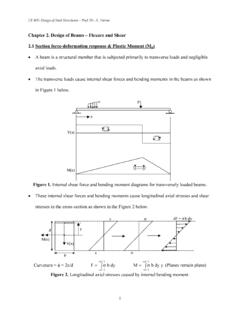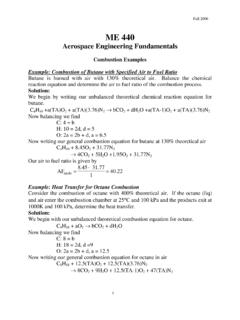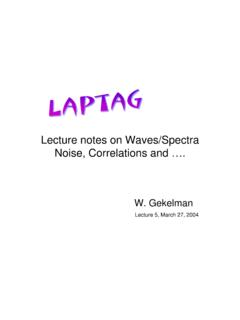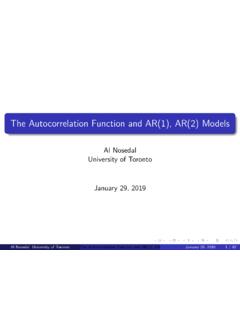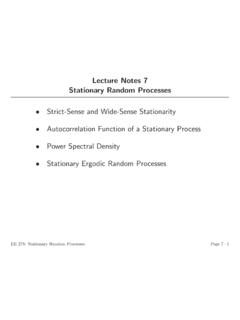Transcription of Energy and Power Spectral Density and Autocorrelation.
1 Lecture 7 - EE 179: Introduction to Communications - Winter 2006 2007 Energy and Power Spectral Density and Outline Energy Spectral Density autocorrelation of Energy Signals Power Spectral Density (PSD) Properties of PSD Filtering Power Signals Modulating Power and Power Signals An Energy signalx(t) has 0<E< for average energyE= |x(t)|2dt. A Power signalx(t) has 0<P< for average powerP= limT 12T T T|x(t)|2dt. Can think of average Power as average Energy /time. An Energy signal has zero average Power . A Power signal has infinite average Energy . Powersignals are generally not integrable so don t necessarily have a Fourier transform. We use Power Spectral Density to characterize Power signals that don t have a Spectral Density (ESD) Defined as x(f) =|X(f)|2.
2 Measures the distribution of signal energyE= |x(t)|2dt= x(f)dfover frequency. Properties of ESD include x(f) 0, x( f) = x(f) forx(t) real, and forx(t) input to afilter with frequency responseH(f), the filter outputy(t) has ESD y(f) =|H(f)|2 x(f). of Energy Signals Defined for real signals asRx( ) = x(t)x(t )dt=x( ) x( ). Measures the similarity of a signal with a delayed version of itself. autocorrelation defines signal Energy :E=Rx(0). Since|Rx( )| Rx(0), can use autocorrelation for signal synchronization. The autocorrelation is symmetric:Rx( ) =Rx( ). The autocorrelation and ESD are Fourier Transform pairs:Rx( ) x(f). Spectral Density (PSD) Power signals have infinite Energy : Fourier transform and ESD may not exist.
3 Power signals need alternate Spectral Density definition with similar properties as ESD. Can obtain ESD for a Power signalx(t) that is time windowed with window size 2T. PSD defined as the normalized limit of the ESD for the windowed signalxT(t):Sx(f) =limT 12T|XT(f)|2. PSD measures the distribution of signal powerP= limT 12T |xT(t)|2dt= Sx(f)dfover frequency of PSD Sx(f) 0 Sx( f) =Sx(f) and Modulation of Power Signals: Letx(t) be a Power signal with PSDSx(f). Ifx(t) is input to a filter with frequency responseH(f), then the filter outputy(t) hasPSDSy(f) =|H(f)|2Sx(f). IfSx(f) is bandlimited with bandwidthB<<fc, then forz(t) =x(t) cos(2 fct),Sz(f) =.25[Sx(f fc) +Sx(f+fc)].
4 Main Points: Energy Spectral Density measures signal Energy distribution across frequency. autocorrelation function of an Energy signal measures signal self-similarity versus delay: can beused for synchronization. A signal s autocorrelation and ESD are Fourier transform pairs. Power signals often do not have Fourier transforms: instead we characterize them using PSD. Can determine the impact of filtering and modulation of Power signals based on PSD.

